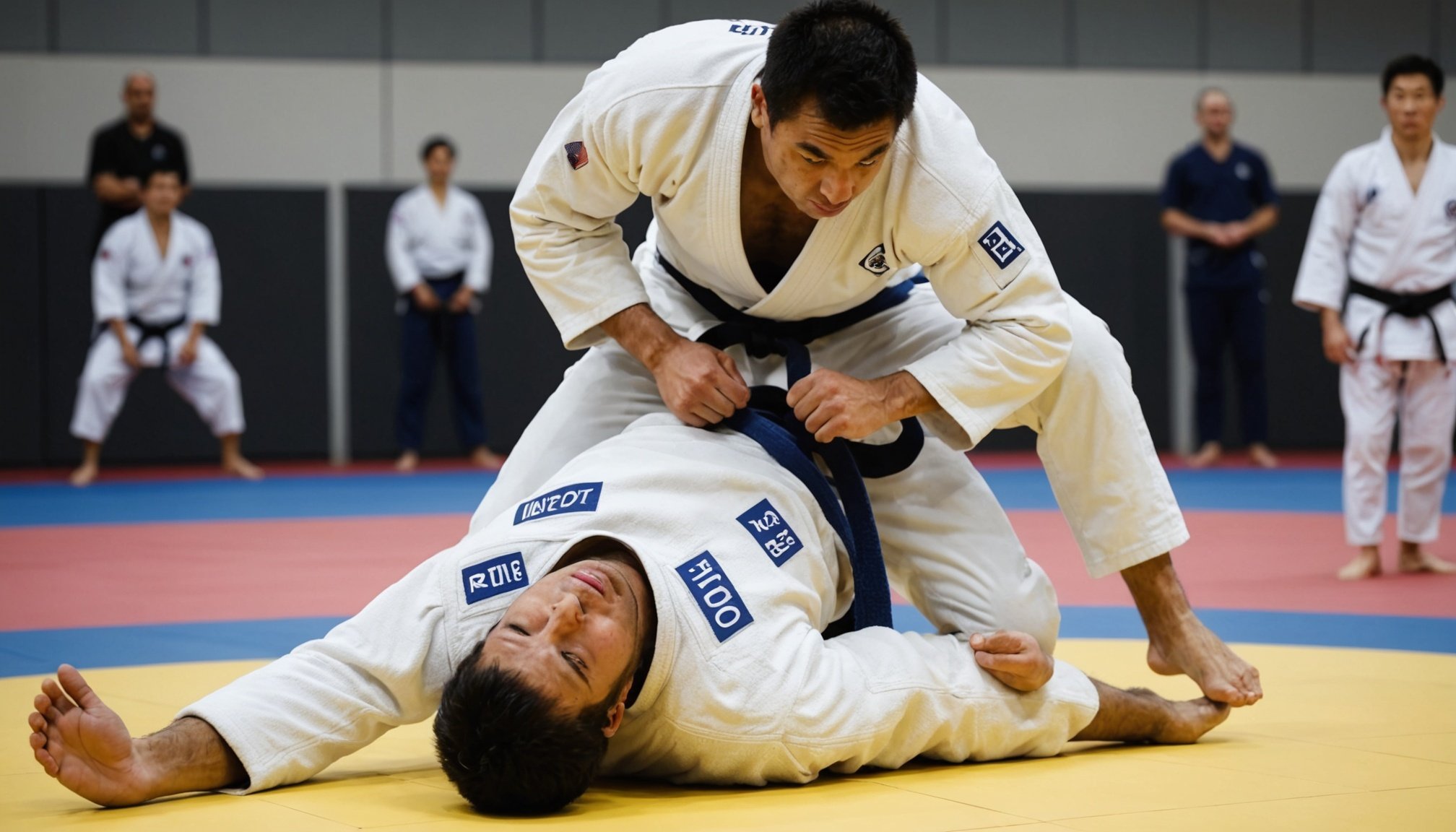Introduction to Flexibility for Judo Athletes
The importance of stretching and flexibility for judo athletes cannot be overstated. As a highly dynamic sport, judo requires practitioners to execute powerful throws, complex grappling techniques, and swift evasive movements. The ability to perform these actions effectively hinges on an athlete’s flexibility. Flexibility enhances judo performance by allowing for a greater range of motion, ensuring that techniques are executed smoothly and efficiently. This not only aids in performance but also helps in maintaining a competitive edge.
Incorporating regular stretching exercises is crucial as a preventive technique against injuries. Flexible muscles and joints are less prone to strains and sprains, common injuries among judo participants. Stretching before and after training sessions prepares the body, increasing blood flow and reducing muscle stiffness, thereby minimizing injury risks.
Also read : Mastering the Tachiai: Strategies for UK Sumo Wrestlers to Elevate Their Initial Charge Technique
For judo athletes, improved flexibility translates into better adaptability on the mat. It facilitates swift transitions between techniques and improves defensive capabilities, allowing fighters to evade or counter their opponent’s moves with precision. Athletes focused on their judo performance will find that a dedicated flexibility routine contributes to overall effectiveness and resilience in their practice, leading to sustainable progress and achievement in the sport.
Top Stretching Routines for Judo Athletes
Effective and targeted stretching routines are vital for judo athletes aiming to enhance performance and prevent injuries. Mastering the right combination can substantially increase flexibility, aiding in dynamic movements crucial on the mat.
Also read : Discover the Decade”s Top Ten UK Combat Sports Icons Who Shaped the Landscape
Dynamic Stretching Routine
Dynamic stretching routines involve active movements that take your joints and muscles through their full range of motion. These are essential pre-training, as they prepare the body for physical exertion. Key dynamic stretches beneficial for judo athletes include arm circles, leg swings, and torso twists. Including these movements in a Judo flexibility exercise programme can significantly improve agility and reaction time. For best results, start with light movements and gradually increase intensity, ensuring the body is fully warmed up before engaging in strenuous judo practice.
Static Stretching Techniques
Post-training, static stretching is indispensable to relax and lengthen muscles. This type of athletes’ stretching involves holding a stretch for a prolonged period, allowing muscles to cool down and recover. Focus on stretches targeting judo-related muscles, such as the chest, hip flexors, and shoulders. Maintain each stretch for at least 30 seconds for maximum benefit. Incorporate deep breathing to deepen your stretch and relieve tension.
Partner Stretching Methods
Partner stretches can amplify the flexibility gained from solo routines. They build trust and foster deeper stretches through mutual support. Classic partner stretches include assisted hamstring and trunk stretching. It’s essential to communicate continuously, maintaining mutual comfort and avoiding overstretching. Always prioritize safety to prevent any potential injuries.
Detailed Descriptions of Each Exercise
Learning and practising proper judo stretching techniques is crucial for improving flexibility and enhancing performance. Let’s explore specific stretches that target different muscle groups.
Hamstring Stretch
Flexibility in the hamstrings is vital for judo, as it aids in powerful kicks and swift movements. To execute a hamstring stretch effectively:
- Begin seated on the floor with one leg extended and the other bent inward.
- Reach forward with both hands toward your extended foot.
- Hold the stretch for 20-30 seconds for optimal flexibility gains.
Explore variations by switching leg positions or adjusting the intensity to increase the challenge as needed. These adaptations can make the exercise more engaging and beneficial.
Hip Flexor Stretch
Hip flexors play a pivotal role in judo performance, impacting agility and strength in grappling techniques. To properly stretch your hip flexors:
- Kneel on one knee and step the opposite foot forward, forming a right angle.
- Shift your weight forward, keeping your back straight, to feel the stretch in your hip.
- Maintain this position while breathing deeply, enhancing the effectiveness.
Correct form is essential to prevent injuries, making it important to listen to your body’s signals and adjust as necessary.
Considerations for Judo Athlete Flexibility Training
Training for judo specific flexibility requires careful consideration of individual needs and experience levels. Athletes should assess their flexibility requirements relative to their judo experience. A new athlete might focus on general flexibility and performance, while a seasoned competitor might require more targeted interventions to address specific limitations. Identifying these needs is the first step towards enhancing judo techniques and preventing injuries.
Balancing strength training and flexibility work is key to achieving optimal performance. While developing strength is crucial for judo’s demanding movements, neglecting flexibility can lead to stiffness and potential injury. Flexibility, on the other hand, should complement strength by improving range of motion and reducing muscle tension. Athletes should integrate flexibility sessions alongside their strength routines to ensure balanced training considerations.
Gaining insights from experienced judo coaches can provide a practical perspective on flexibility training. Coaches often advocate for dynamic stretching routines prior to practice, to prepare muscles for the intensity of judo. Post-training, a combination of static stretches may assist in muscle recovery. Applying judo specific flexibility techniques, such as partner-assisted stretching, can further enhance an athlete’s performance and readiness in competition.
Tips for Stretching Effectively
Engaging in effective stretching is essential for enhancing athletic flexibility. Here’s how you can ensure your stretching routine is both safe and beneficial.
Importance of Warm-Up
Warm-ups play a crucial role in effective stretching. Before engaging in stretching exercises, it is important to gradually boost blood flow to your muscles, increasing their elasticity. Typical routines include light jogging, dynamic movements like arm circles, or gentle cardio exercises. There is a common misconception that you should stretch cold muscles, but this can lead to strains or injuries. Thus, properly warming up is key to a safe and productive stretching session.
Frequency and Consistency
For optimal results, it’s recommended to incorporate stretching into your daily routine. Regularity greatly enhances athletic flexibility. Many athletes find that integrating brief but consistent stretching sessions into their judo training schedules maximizes flexibility gains. Over time, the long-term benefits such as improved muscle coordination, balance, and reduced injury risk become apparent.
Listening to Your Body
Effective stretching requires understanding your body’s signals to avoid overstretching or strain. It’s important to recognize when to stop if you experience sharp pains. Utilize techniques such as gradual stretches and avoid pushing past your comfort zone. Emphasize rest and recovery, as these are integral parts of any flexibility training regimen to prevent injury and aid in muscle adaptation.
Video Demonstrations and Visual Resources
In the world of Judo, mastering flexibility and stretching techniques is crucial for optimal performance. Visual resources play a significant role in understanding these techniques better. They offer a clear, step-by-step view, making it easier to grasp complex movements. By watching stretching videos, practitioners can mimic techniques with greater accuracy and precision.
When it comes to finding quality Judo flexibility demonstrations, it’s vital to seek reliable sources. Platforms like YouTube and Vimeo host a variety of professional tutorials, which cater to both beginners and advanced athletes. These resources are crafted by adept instructors, ensuring learners get accurate guidance.
Moreover, the use of mobile apps can greatly enhance one’s flexibility routine. Apps such as GOWOD and StretchIt provide tailor-made programs focusing on flexibility exercises. These applications often include a visual learning component, allowing users to follow along in real-time. Through interactive video demonstrations, users can ensure they perform stretches safely and correctly.
Additionally, online platforms such as websites focused on martial arts training offer a plethora of exercises. They frequently update content to remain relevant and engaging. This allows users to continuously progress in their flexibility journey, ensuring consistent improvement.
Conclusion and Further Resources
Exploring flexibility training techniques is essential for judo athletes aiming to enhance their athlete development. Various resources can assist in refining this critical skill. Many academic studies highlight the significant link between flexibility and overall performance in judo, offering insights that athletes can leverage to their advantage.
For those interested in deepening their understanding, numerous additional resources provide valuable guidance. Texts specifically focusing on judo flexibility training are excellent starting points. They offer practical exercises and routines tailored to the unique demands of the sport.
Furthermore, academic articles elucidate the physiological benefits of flexibility, supported by empirical data. A recommended reading list includes publications from sports science journals that delve into various stretching techniques and their impact on athletic performance.
Athletes are encouraged to explore these materials, as sustained learning can significantly contribute to flexibility improvement and athlete development. By integrating the insights gained from these resources into their training regimen, judo practitioners can achieve enhanced agility and resilience.
In conclusion, prioritising flexibility not only boosts performance but also mitigates injury risks, ensuring a more robust and competitive judo experience.






